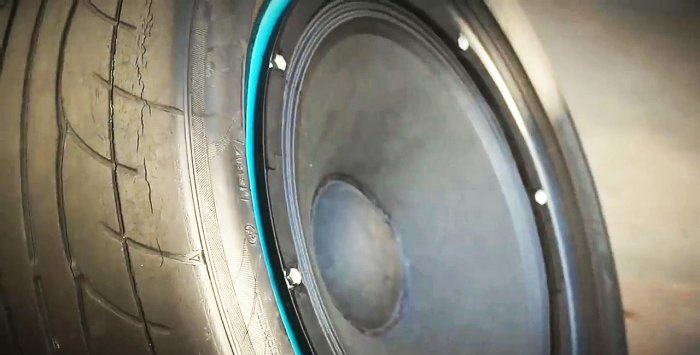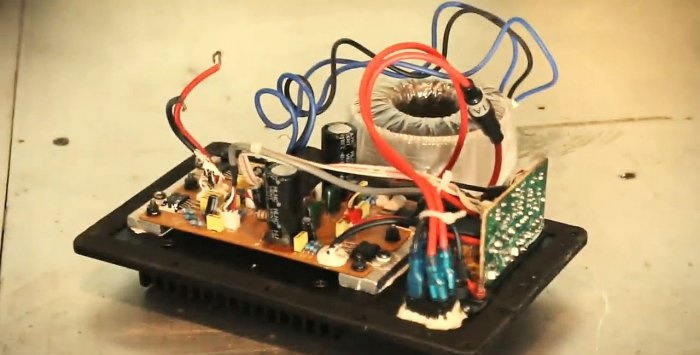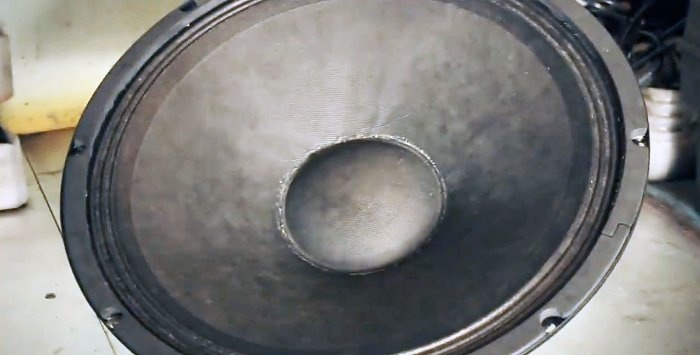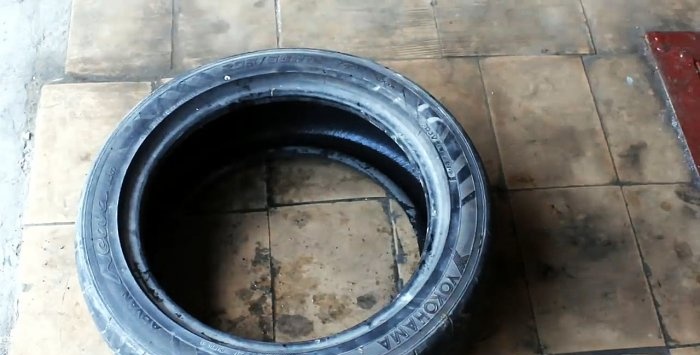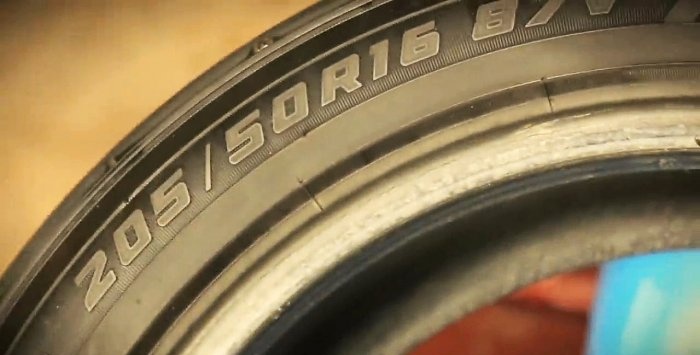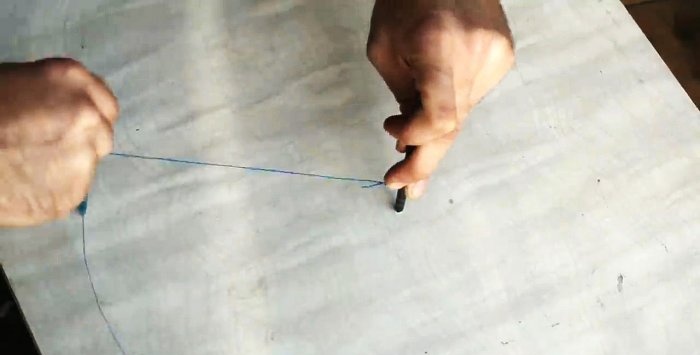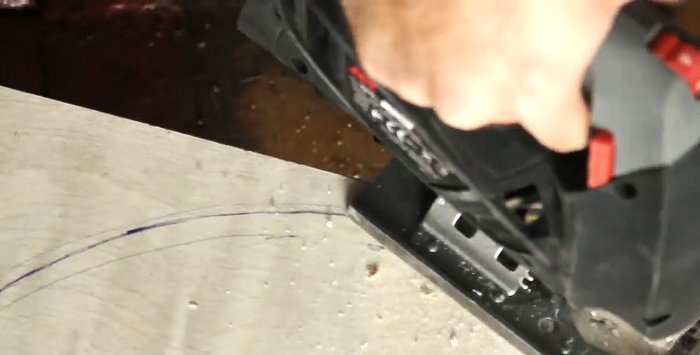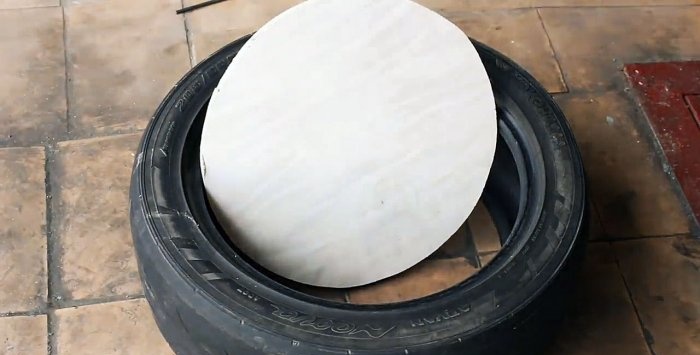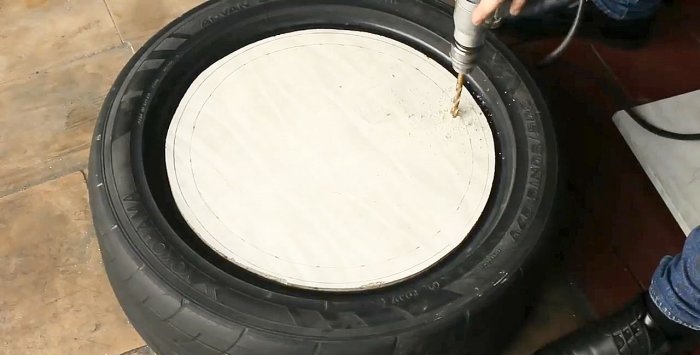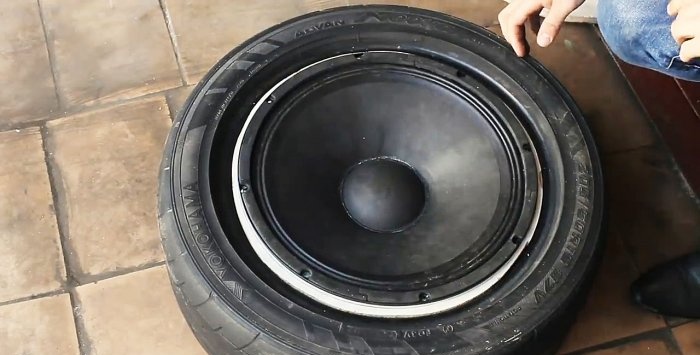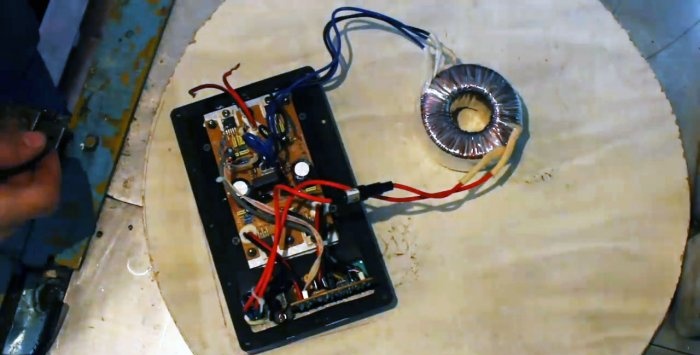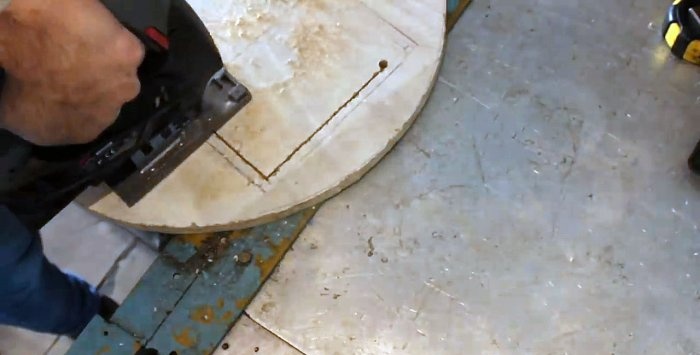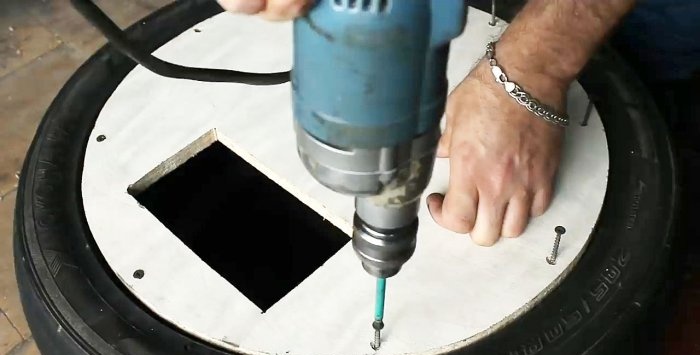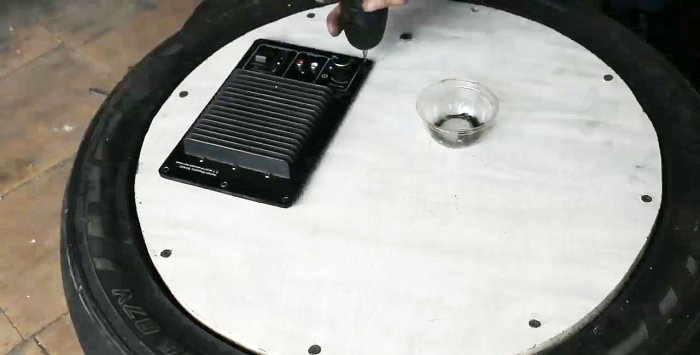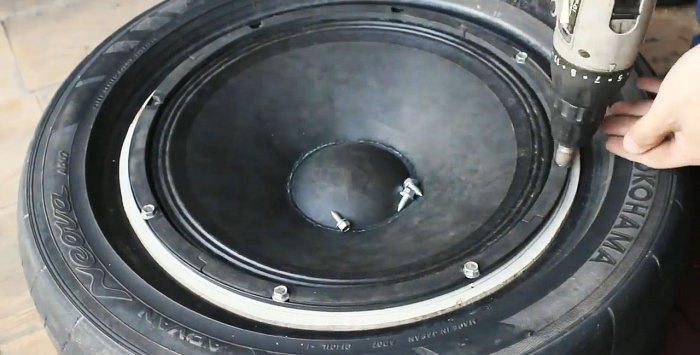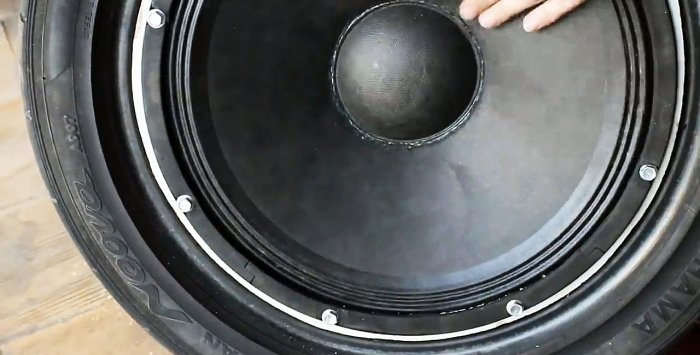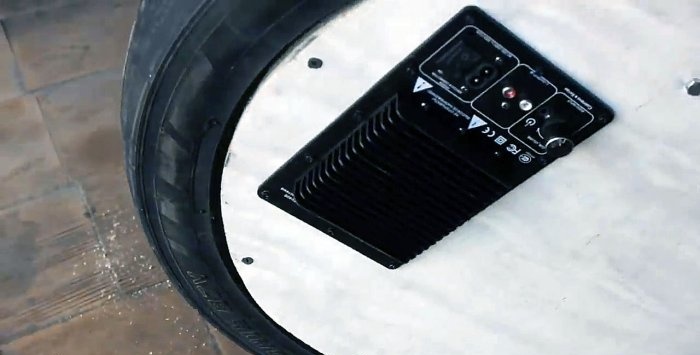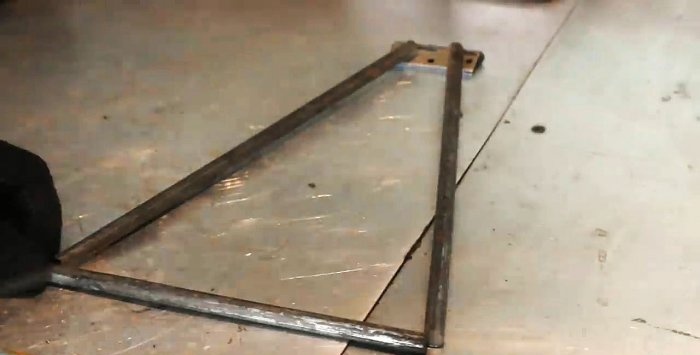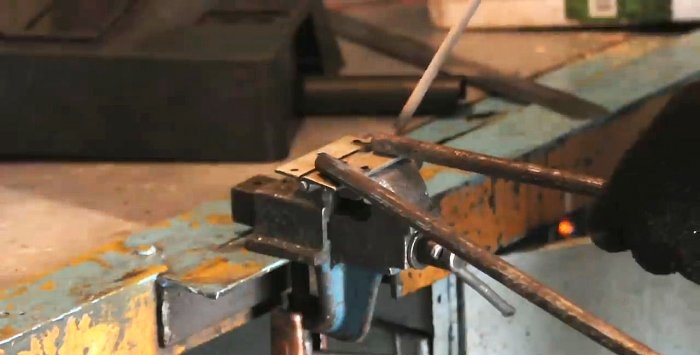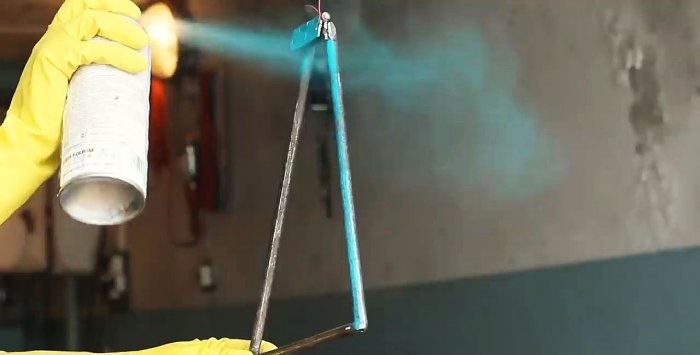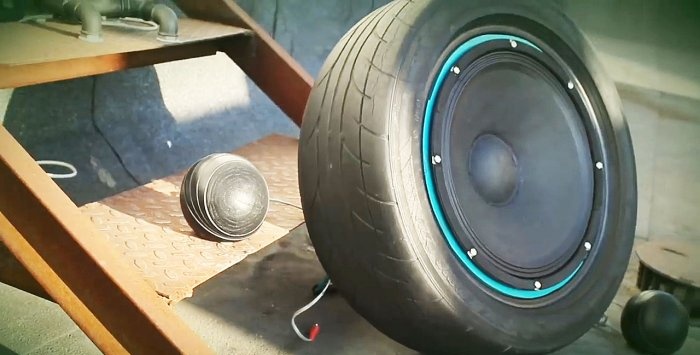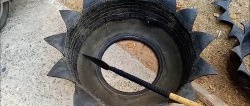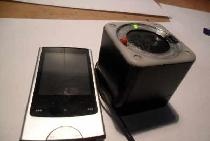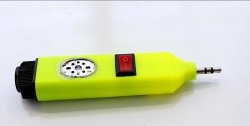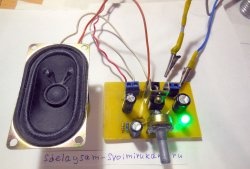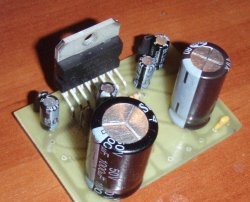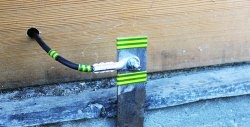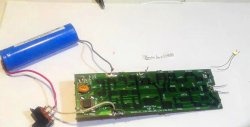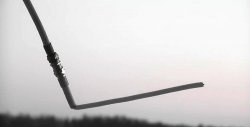Tire column
Hi all! My name is Max. Today I want to tell you how you can build a housing for an acoustic speaker from an old tire.
Materials and tools I used
- Acoustic power amplifier. I had Chinese built-in model with subwoofer volume control, marked SV400;
- Powerful dynamic head. I had at my disposal a 15-inch speaker with a resistance of 4 ohms. I must warn you that the impedance and power of the speaker must be matched to the parameters of the amplifier;
- Old car tire. I’ll say right away - it should not have through holes or gusts;
- A couple of sheets of multi-layer plywood. Its area should be enough for two circles with a diameter slightly larger than the seat size of the tire. I used a cabinet door that had been thrown into the trash;
- Powerful screws - self-tapping screws of short length (15 - 20 mm). I used screws with a 10 mm socket head, which, in my opinion, should emphasize the brutality of the entire structure;
- Two pieces of steel rod or fittings approximately 0.5 meters long with a diameter of 8 - 12 mm (options are possible to suit your taste) and a door hinge.
The tools I needed were a drill, a screwdriver (or two in one), and an electric jigsaw. Well, to make the stand we had to use a welding machine.
Making a speaker from a car tire
Thoroughly wash the tire from dirt using a brush and detergent.
Now from thick plywood (in my case from a cabinet door) we make the back wall of the speaker and a flange for attaching the dynamic head.
We mark a circle on the plywood, the diameter of which is 10 - 15 mm greater than the inner (landing) diameter of the tire. To determine this size accurately, you need to measure the height of the sidewall of a particular tire.
Using the markings, carefully cut out a circle with a jigsaw, which will serve as the back cover.
To make a flange, mark two circles on the second piece of plywood, the outer one is the same diameter as the back cover, the inner one is the size of the tire. We make a cut along the lines of both circles. We should get a ring with a width equal to the difference in the radii of the two circles.
We try on the resulting parts to make sure they are made correctly.
You need to cut a hole in the back wall for the amplifier.
We mark it in such a way that when installed, the insides of the amplifier are inside the case, and the outer panel lies on the wall and can be secured with screws. To do this, you can outline the outline of the amplifier's outer panel, and then make an indentation inward to provide space for mounting.
After cutting a hole with a jigsaw, we try on the amplifier. If everything is normal, you can attach the rear panel of the speaker to the bus.Since the structure of the tire material is quite dense, I decided to attach the panel with screws directly to the tire, marking and drilling eight holes evenly spaced around the circumference.
Here I used regular screwdrivers. In order for their conical heads to be flush with the surface of the back panel after screwing in, I drilled out the beginnings of the holes with a drill of a larger diameter. Having secured the panel, I was convinced that the decision to limit myself to simple screws was correct.
Now you can begin installing the amplifier and its supply transformer. My amplifier's transformer is toroidal in shape, so I will secure it with a bolt, washer and nut. The hole for the bolt must be drilled in the rear panel of the speaker. The bolt will go inside the ring core of the transformer, and the installed washer and nut will press the transformer to the inner surface of the panel. Looking ahead a little, it should be taken into account that a rather voluminous transformer located inside the speaker can interfere with the subsequent installation of the speaker, resting against its magnetic system. To avoid this, we place the transformer closer to the periphery of the rear panel circumference.
After completing the installation of the rear panel, amplifier and transformer, I applied sealant to the junction of the panel and the tire. This is necessary so that when the speaker is operating, air is not pushed out by its diffuser, reducing the sound pressure. For the same reason, the tire must be intact.
Let's start installing the speaker. We place the cut flange on the side of the tire and install the speaker on it. In the places where there are sockets for attaching the speaker, we drill holes for screwing in screws.Before installing the speaker, do not forget to connect its two wires to the amplifier output.
On the front side, I decided to use screws with 10 mm socket heads. Firstly, they are more powerful and designed for a higher tightening torque, which will allow the speaker to be secured more securely. Secondly, the external appearance of the bolt heads will give a unique ambiance to our product.
The final touch is the stand. According to my plan, the bus-speaker should stand on the floor at a certain angle, resting on a stand attached to the rear panel.
I welded the stand in the form of a triangle from 8 mm steel round timber. I chose the length of the side of the triangle equal to the radius of the column (that is, the tire). The base of the triangle will rest on the floor, and I welded one half of the door hinge to its top. The second half of the hinge will be screwed to the back panel. Thus, the stand will have a degree of freedom that allows you to change the angle of the speaker.
For greater stability and to avoid damaging the floor, I placed a rubber hose cut lengthwise onto the base of the stand. I painted the stand with spray paint. I think such a column can be used in a car, installing it in place of the spare wheel.
Adviсe
- Regarding tire size. It must be selected according to the size of the speaker you have. For my 15-inch speaker, a tire with a 16-inch diameter fits well.
- When tightening screws with a power tool, use a torque limiter to prevent screws from turning in wood and rubber and loosening the fastener.
- And lastly, follow safety precautions and just be careful.
Good luck!
Watch the video
Similar master classes
Particularly interesting
Comments (14)

